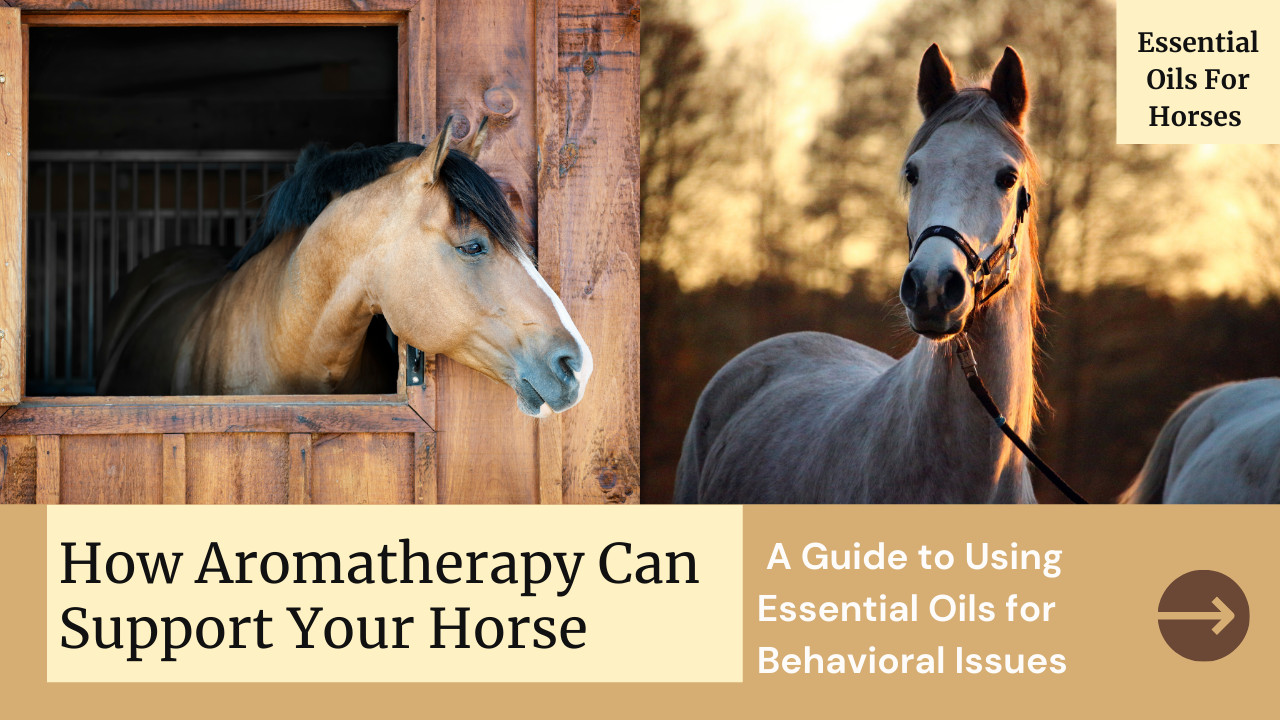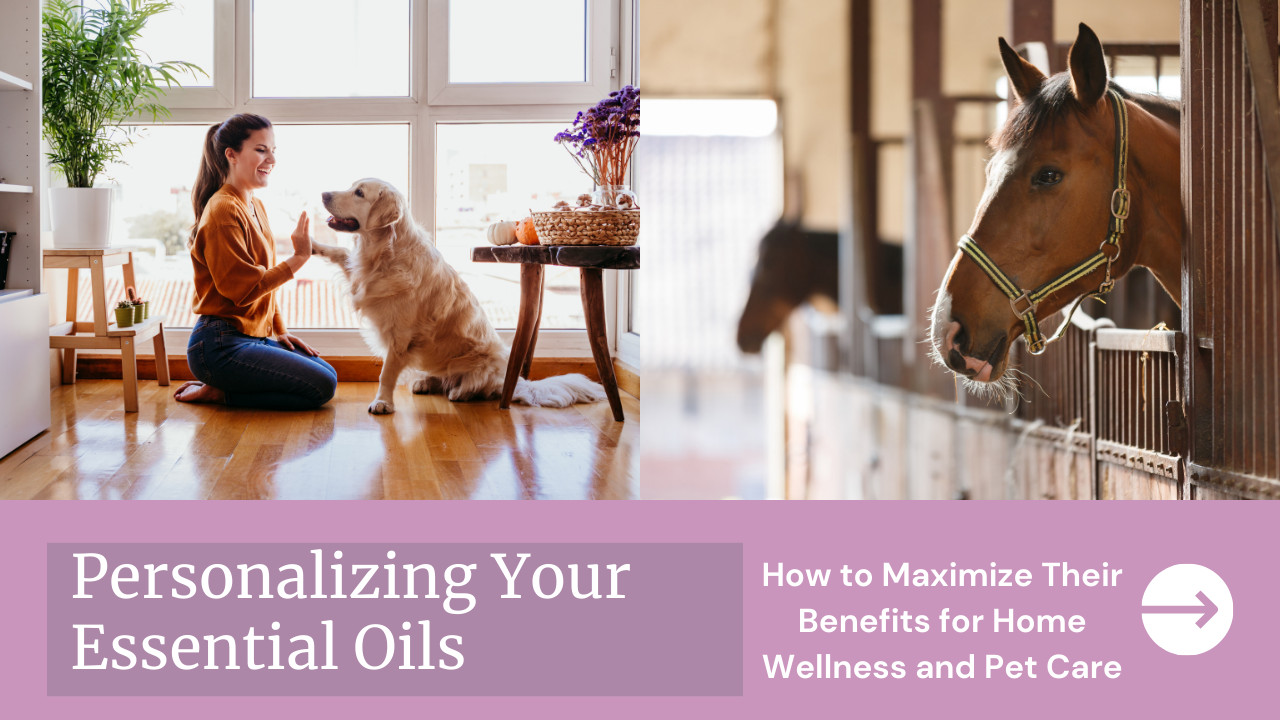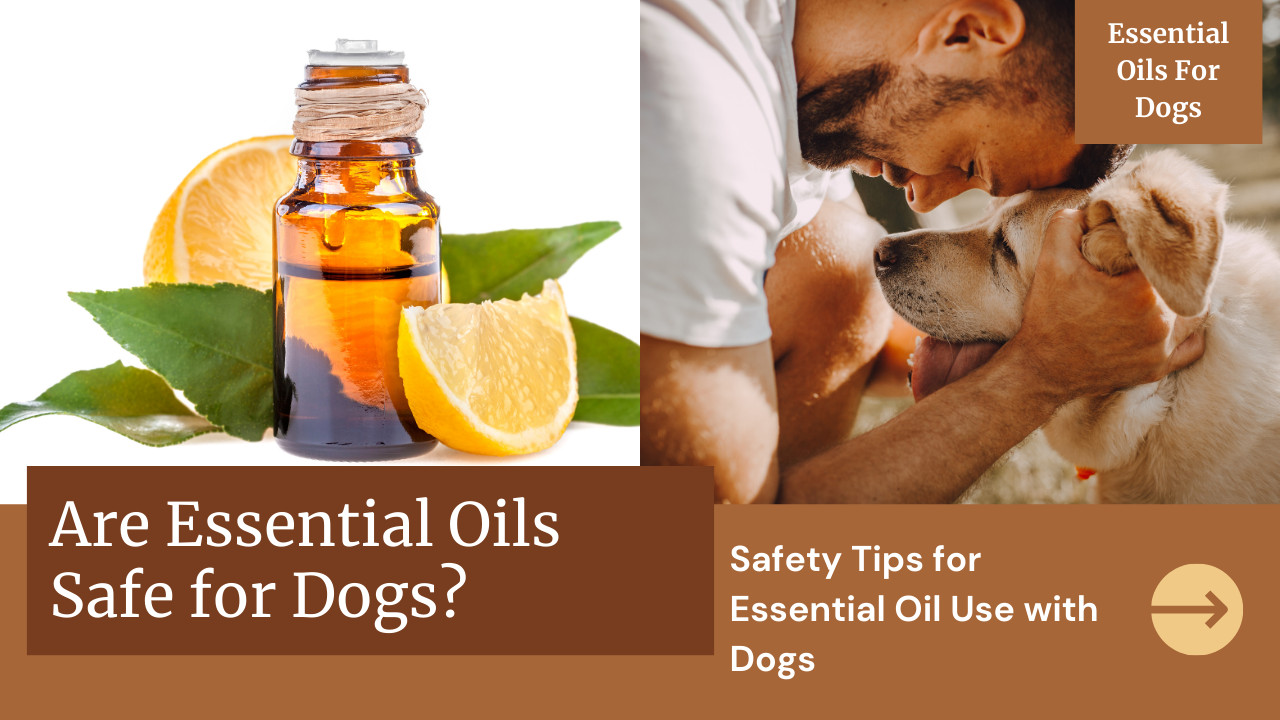Valentine’s Day is the perfect time to set the mood, create special moments, and celebrate love in meaningful ways. Whether you're planning a cozy night in, a romantic dinner, or a luxurious spa experience, essential oils can enhance every aspect of your celebration. From crafting sensual massage blends to creating a romantic ambiance, this guide will show you how to make this Valentine’s Day truly unforgettable with the power of aromatherapy.
If you're ready to infuse your love story with nature’s most enchanting scents, keep reading—and don’t forget to grab your free 'Valentine’s Day Essential Oils' Guide at the end!
Why Use Essential Oils for Valentine’s Day?
Essential oils are more than just pleasant aromas—they can elevate your mood, promote relaxation, and even enhance intimacy. By choosing the right oils and using them creatively, you can create a sensory experience that deepens connection and makes your Valentine’s Day extra special.
Some benefits of using essential oils for romance include:
✅ Enhancing Mood – Certain essential oils, like ylang ylang and jasmine, are known for their uplifting and aphrodisiac properties.
✅ Reducing Stress – Scents like lavender and sandalwood help promote relaxation and emotional balance.
✅ Boosting Connection – Whether through massage, perfumery, or diffusing, essential oils engage the senses and bring you closer to your partner.
Choosing High-Quality Essential Oils
Not all essential oils are created equal. Many products on the market are diluted, synthetic, or mislabeled, meaning you may not be getting the pure benefits of the plant. When choosing essential oils, always consider:
- Purity – Look for 100% pure, premium essential oils with no synthetic additives.
- Transparency – Does the company disclose how the oils are sourced and tested? Do they own farms and can you visit?
- Sourcing – Ethically sourced oils from farms with sustainable practices with a focus on uplifting the community.
I personally trust Young Living™, a company with a Seed to Seal® commitment that guarantees purity, potency, and sustainability. I've even visited their farms and participated in planting and harvesting firsthand! If you need a reliable essential oil source, check out my curated Young Living Essential Oil Bundle, which includes everything from this guide so you can start right away.
Top 10 Essential Oils for Valentine’s Day
Looking for the best essential oils to set the mood? Here are 10 romantic oils perfect for Valentine’s Day:
- Rose – The ultimate symbol of love, promoting deep emotions and connection.
- Ylang Ylang – A known aphrodisiac with a rich, exotic floral scent.
- Jasmine – Sensual and luxurious, perfect for relaxation and intimacy.
- Sandalwood – Warm, woodsy, and grounding, ideal for a cozy atmosphere.
- Patchouli – Deep, musky, and earthy—adds depth to romantic blends.
- Neroli – Light and citrusy, helps ease tension and promote happiness.
- Geranium – A floral, sweet scent that balances emotions and promotes warmth.
- Orange – Uplifting and energizing, adds brightness to any blend.
- Nutmeg – A spicy and warm scent that enhances sensuality.
- Vanilla – Soft, sweet, and inviting—the perfect romantic touch.
Creative Ways to Use Essential Oils for Romance
Beyond simply diffusing essential oils, here are some fun and creative ways to incorporate them into your Valentine's Day celebration:
1. DIY Massage Oils
Enhance intimacy with a custom massage oil blend. Here’s one to try:
Paradise Escape Massage Blend
6 drops Jasmine
5 drops Sandalwood
4 drops Neroli
5 drops Vanilla
Mix with a carrier oil like coconut or jojoba, and enjoy a relaxing, sensual massage.
2. Romantic Bath Soak
Create a luxurious spa-like bath by adding a few drops of rose and vanilla essential oils to Epsom salts before dissolving them in warm water.
3. DIY Linen & Pillow Spray
Mist your sheets and pillows with a mixture of geranium, neroli, and sweet orange for a fresh, romantic ambiance.
4. Chocolate Fondue with a Twist
Enhance a classic chocolate fondue by adding a couple of drops of orange essential oil (labeled for ingestion) for a delicious citrusy kick. Pair with strawberries, marshmallows, and bananas for a fun dessert!
5. Romantic Playlist & Ambiance
Set the mood with soft lighting and a curated romantic playlist featuring timeless love songs. A cozy atmosphere makes all the difference!
Your Next Step: Get the FREE Valentine’s Day Essential Oils Guide!
Now that you have all these amazing ideas, why not make it easy by grabbing my free Valentine’s Day Essential Oils Guide? Inside, you’ll get:
✅ Easy-to-follow diffuser blends & massage oil recipes
✅ A full breakdown of romantic essential oils & their benefits
✅ Creative ways to incorporate essential oils into your celebration
Click below to grab your free guide and start planning the most romantic and aromatic Valentine’s Day ever!
Final Thoughts
Valentine’s Day is all about celebrating love, and what better way to do that than by engaging the senses with essential oils? Whether you're indulging in a couples' spa night, enjoying a romantic dinner, or creating a cozy ambiance, these natural aromas will enhance your experience in the most beautiful way.
And if you need high-quality essential oils, check out my exclusive Young Living Bundle, which includes all the must-have oils from this guide—plus a diffuser and carrier oil so you can start right away!
Happy Valentine’s Day, and may your celebration be filled with love, wellness, and the magic of essential oils!

As horse owners, we all encounter challenging behaviors from time to time. Whether it’s pawing in frustration, weaving in their stall, pacing in the paddock, or calling out when separated from their herd, these behaviors can be confusing and frustrating. We might ask ourselves: Why is my horse acting like this? What can I do to help them?
The good news is that there are many wellness tools and nutritional supplements available to help horses with behavioral issues. One of my favorites is essential oils—a natural and effective way to support your horse’s emotional and physical well-being. However, before we explore how aromatherapy can help, it’s crucial to look at the whole horse. Understanding the root causes of your horse’s behavior and addressing those first, then supporting them with the right wellness tools, will give you the best results. In this post, we’ll dive into common behavioral issues, their underlying causes, and how you can use aromatherapy along with other strategies to promote your horse's emotional health.
Common Behavioral Issues in Horses
Behavioral problems in horses can manifest in various ways, often leading to frustration for both the horse and the owner. Here are some of the most common behavioral issues that horse owners face:
Pawing: Often seen when horses are confined or frustrated, pawing is a sign that your horse is either bored, anxious, or seeking attention.
Weaving: This repetitive side-to-side head and body movement is usually a sign of stress or frustration, commonly found in horses that are confined in stalls for long periods.
Pacing: If your horse is pacing back and forth, it’s often an indicator of anxiety, particularly when confined to a stall or paddock.
Calling: Excessive calling, particularly when separated from their herd, can indicate separation anxiety. Horses are herd animals, and being isolated from their companions can be emotionally distressing.
Barn Sour: When horses refuse to leave the barn or show anxiety about leaving the stable, it’s usually linked to separation anxiety or simply an attachment to their safe space.
Each of these behaviors can have an emotional or physical trigger, and it’s essential to address the root cause in order to correct the behavior effectively.
Understanding the Root Causes of Behavioral Issues
Before we jump into solutions, it’s essential to understand what might be causing your horse’s behavior. Horses are incredibly sensitive to their environment, and many behavioral issues stem from a combination of emotional, physical, and environmental factors. Here are some common causes:
Emotional Distress: Horses are emotional creatures and are highly attuned to their surroundings. Anxiety, fear, or even boredom can lead to behaviors like pawing, pacing, or weaving. Lack of turnout or the ability to socialize with other horses can also increase emotional distress, leading to more pronounced behavioral issues.
Health Issues: Sometimes, what appears to be a behavioral problem may actually be caused by discomfort or pain. For example, a horse that is constantly pawing could have digestive issues, or a horse that is pacing may be dealing with physical discomfort such as ulcers, joint pain, or muscle stiffness.
Nutritional Imbalances: Nutritional deficiencies, like low magnesium levels, can also contribute to undesirable behaviors. Studies have shown that low magnesium can lead to restlessness, irritability, and even muscle spasms in horses. If your horse is exhibiting signs of anxiety, pacing, or other high-strung behaviors, it's worth looking into their diet to see if nutritional support is needed.
Separation Anxiety: Horses are herd animals, and being isolated can be extremely stressful for them. Calling, pacing, and even aggressive behavior can all be signs of separation anxiety. If a horse has limited contact with other horses or is kept isolated, these behaviors can intensify.
Lack of Stimulation: Horses are intelligent creatures that need both physical and mental stimulation. Without proper exercise, turnout, and engaging activities, they can become bored, leading to repetitive behaviors like weaving, pawing, or cribbing. Regular turnout and variety in their daily activities can reduce this type of behavior.
Routine Changes: Horses thrive on routine, and any significant changes—whether it's a new barn, new pasture mates, or a new rider—can cause stress and lead to behavior problems. Consistency helps horses feel secure, so sudden shifts in their environment or schedule can trigger anxiety or behavioral issues.
Once you’ve identified the potential root cause of your horse’s behavior, the next step is to address it directly. For example, if your horse is weaving, one of the first things you might want to check is whether they have adequate turnout time. Sometimes, simply increasing their time outdoors and allowing for more natural movement can correct the behavior.
Once you’ve addressed any physical or environmental causes, aromatherapy can be a powerful tool to help balance your horse’s emotions, promote calmness and relaxation, and improve their overall mental health. Essential oils work in tandem with these adjustments, helping to further ease tension and emotional distress, creating a more relaxed and emotionally stable horse.
How Aromatherapy Can Help:
One of the keys to using essential oils effectively for emotional support is to start now and make them a regular part of your horse's routine. Consistency is key, much like how a person works on their mindset every day to maintain a positive outlook—your horse can benefit from regular use to help anchor a sense of calm and emotional balance. Using essential oils during times when your horse is relaxed and behaving well will help create a lasting association with positive experiences. Over time, this regular use builds a foundation of emotional well-being that can help maintain a positive emotional state, even when your horse faces stressful situations.
Essential oils work by influencing the limbic system—the part of the brain that controls emotions and behavior. When inhaled, essential oils enter the bloodstream through the olfactory system and directly affect your horse's emotional state.
Simple Ways to Use Essential Oils with Your Horse
Here are some simple ways to incorporate essential oils into your horse’s routine:
Inhalation: Hold the bottle of essential oil near your horse's nose, allowing them to inhale the scent. Or, apply a drop to your hands, rub them together, and offer your hands for your horse to smell.
Barn Sprays: Create a calming spray by diluting essential oils in water and spritzing it around the barn. This can help establish a peaceful atmosphere.
Diffusion: If you have electricity in the barn, use a diffuser placed out of reach of your horse to spread the aroma throughout the space.
Wooden Clothespin: Apply essential oils to a wooden clothespin and clip it outside your horse’s stall. The oils will diffuse slowly, allowing your horse to inhale the aroma. With their keen sense of smell, horses can easily pick up the scent and benefit from the effects of the oils.
During Training Session: Offer essential oils before, during, and after training sessions, especially when working on an unwanted behavior. Also, be mindful of your own emotional state—remember, we are always half of the equation, and our emotions can influence our horse’s behavior.
Remember, consistent use helps create a foundation for emotional balance, so when your horse faces a stressful situation, a state of calmness and positivity is more easily accessible.
Top Essential Oils for Addressing Behavioral Issues
Some essential oils that can be especially helpful for horses experiencing behavioral issues include:
Lavender: Known for its calming properties, lavender is one of the most effective oils for helping reduce tension and worry. It’s great for calming your horse before a ride or when they’re feeling unsettled.
Roman Chamomile: Roman chamomile has a soothing, gentle effect on the nervous system and is excellent for reducing tension and promoting a sense of calm.
Vetiver: Vetiver is a grounding oil that promotes emotional stability and relaxation. It’s especially helpful for horses that are pacing or agitated.
Frankincense: Frankincense is known for its calming and balancing effects. It can help reduce tension, soothe anxiousness, and support emotional well-being.
Bergamot: This uplifting oil is great for relieving tension and boosting mood, making it a great choice for horses that struggle with emotional stress.
Cedarwood: Cedarwood is a grounding oil that promotes emotional stability and calmness. It’s especially helpful for horses that may be nervous or stressed, offering a sense of security and relaxation.
Three Blends I Almost Always Have in My Pocket:
While single essential oils are powerful on their own, there are a few blends I rely on regularly for their ability to work synergistically to provide emotional balance and calmness. These blends are part of my go-to toolkit for supporting my horse’s well-being, especially when dealing with stressful situations.
Valor™: Valor™ is a powerful blend known for promoting confidence and a sense of balance. It’s great for helping horses feel grounded and empowered, especially in stressful situations or during training sessions.
KidScents™ Sleepyize™: Sleepyize™ is a blend of essential oils developed to promote relaxation and restful sleep for kids. I find it’s very effective for relaxing horses and helping them to feel calm and centered.
AnimalScents™ T-Away™: T-Away™ is a calming blend that helps promote relaxation and ease during stressful moments. It's a blend I'm quite fond of using for horses that need support in managing tension and emotional distress.
By the way, I invite you to check out the company I use for my essential oils by clicking HERE. Quality and proper dilution are two of the biggest safety factors when using oils with horses, and I’ve personally visited the farms, helped plant, and participated in the distillation process. This transparency reassures me that I’m using pure, safe essential oils for my animals. This is an affiliate link at no extra cost to you, and your support as a small business owner truly means the world to me!
Behavioral issues in horses, like pawing, weaving, pacing, and calling, can be challenging for any horse owner. But by understanding the root causes of these behaviors and using tools like aromatherapy, you can support your horse’s emotional health and help them overcome these challenges.
Remember, aromatherapy is just one piece of the puzzle. Addressing the root cause of the behavior through consistent routines, proper exercise, and ensuring your horse has companionship and mental stimulation will make a world of difference. With patience, a calm presence, and the right tools, you can help your horse lead a more balanced and emotionally stable life.
I’d love to invite you to check out my course, The Oily Horse, designed to empower you to safely and confidently use essential oils with your horse. This course goes beyond just telling you which oils to use—it teaches you how to choose the right oil for your horse's unique needs, when to use it, and why it works. My goal is to help you become confident in making your own decisions, so you’re equipped to support your horse with oils in a way that works best for them, every time. Click HERE!

When it comes to using essential oils, one of the most powerful things you can do is personalize how you use them. When you start experimenting with blends or diffusing oils, it’s important to ask yourself: What do I want to achieve with these oils?
Setting an intention is the first step toward maximizing the benefits of essential oils. Whether you want to create a calm, relaxing atmosphere in your bedroom, freshen up your home with natural scents, or help your dog feel more at ease, knowing your why helps you choose the right oils and ensures that they do exactly what you need them to do.
For example, ask yourself:
- Do I want my home to smell amazing and inviting? Choose oils like lemon, lavender, and eucalyptus.
- Am I trying to get better sleep? Go for oils like lavender, chamomile, and cedarwood for a relaxing environment.
- Do I need to calm my dog down? Look to oils like lavender, roman chamomile, and frankincense for their calming properties.
By setting a clear intention, you’ll have a much better understanding of which oils to use. This personalized approach ensures you’re using oils that align with your specific needs, maximizing the benefits of aromatherapy in your daily life.
From there, you can move into customizing your essential oils to meet your exact needs, whether you prefer a ready-made blend or want to experiment with crafting your own signature scents.
Why Personalizing Your Essential Oils Matters
Personalizing essential oils is all about tailoring them to your needs and creating a more meaningful experience. Essential oils can be used for so many different things—from calming your mind to refreshing the air, and even helping your pets feel more at ease. By personalizing your oils, you're not only addressing specific issues but also enhancing your daily life in ways that work for you.
For example:
- Use oils like lavender and cedarwood in your bedroom to promote a relaxing atmosphere for better sleep.
- Place citrus oils like lemon or orange in your living room to boost energy and create a cheerful ambiance.
- Diffuse eucalyptus or peppermint in the kitchen to freshen the air and neutralize odors.
When you know your intention, it’s much easier to make choices about which oils to use and how to incorporate them into your routine.
Safety First: Using Essential Oils Around Family and Pets
When it comes to using essential oils around your family and pets, safety should always be your top priority. Unfortunately, the essential oil industry is largely unregulated, which means that many oils on the market are adulterated with additives, chemicals, and even synthetic fragrances. These cheap additives can not only diminish the quality of the oil but also be harmful—especially for your pets, who are more sensitive to these chemicals than humans.
Adulteration is overly common in the essential oil market. It’s a practice where cheaper, synthetic chemicals or diluted substances are added to essential oils, compromising their purity and safety. Some of these oils are even marketed as pure essential oils, making it harder for consumers to distinguish between high-quality, safe products and those that are potentially harmful.
For this reason, I always recommend choosing oils from companies that provide transparency about their sourcing and distillation process. I personally trust a company where I’ve visited the farms, helped with planting, and participated in the distillation process. This hands-on experience has given me confidence that the oils I use in my home and at the barn are pure, safe, and effective. Transparency like this ensures that you’re not just getting a product—you're getting one that has been carefully crafted with quality and purity in mind. Click HERE to check them out.
Now, let’s talk about dilution—an essential part of safely using essential oils. Undiluted oils can be too strong, especially for pets and sensitive individuals. Best practice is to dilute your essential oils either by diffusing them or using them in sprays, and with a carrier oil (like coconut or jojoba oil) when applying them to the skin . Even when diffusing, it’s important to follow recommended guidelines for diffusion time and oil amount to avoid overwhelming the air with too much fragrance.
Here are some safe ways to incorporate essential oils into your daily routine:
Diffusing: This is one of the safest ways to use essential oils. The oils disperse in the air, creating a pleasant aroma that can benefit your entire family without overwhelming anyone. When diffusing around pets, always ensure that the room is well-ventilated and that your dog can leave the room if they desire. For more tips on diffusing safely around pets, check out my blog post on diffusing essential oils with dogs HERE.
Room Sprays: Another great option for using essential oils is making a DIY spray. You can then use this diluted mix to refresh bedding, linens, or as a natural air freshener. For a step-by-step guide on making your own spray, click HERE.
Essential Oils for Every Space: Personalize Your Home and Barn
When it comes to personalizing using your essential oils, each room in your home (or barn!) can benefit from a tailored approach. Whether you're looking to create a calming atmosphere, freshen up the kitchen, or enhance your barn environment, essential oils offer a natural solution that can make a noticeable difference. Let’s dive into how you can make each space in your home (and your barn!) feel fresh, inviting, and customized to your needs.
Living Room: Ambiance and Relaxation
Your living room is where you unwind, entertain, and connect. For a cozy, welcoming atmosphere, try essential oils that promote calm and relaxation. My go-to blend is a combination of lavender and frankincense, which creates a peaceful environment without being overwhelming. Another great choice is cedarwood paired with orange for a more grounding yet uplifting vibe.
If you're looking to create ambiance for gatherings, citrus oils like lemon or orange are perfect for energizing the space and boosting everyone's mood. They’re bright and cheerful without being too overpowering. Diffusing oils is great, but another quick hack is to add a few drops of your favorite essential oil to a cotton ball and place it in a corner of the room or in a decorative bowl for a subtle scent boost.
Bathroom: Freshness and Cleanliness
The bathroom is one of those spaces where odors can quickly build up, but essential oils can easily take care of that. You can make your bathroom smell fresh by simply using eucalyptus, lemongrass, or tea tree oil. These oils are not only great at deodorizing, but they also have purifying properties that make them perfect for a space like the bathroom.
Reed diffusers are fantastic for bathrooms—they’re small, aesthetically pleasing, and work well in confined spaces. If you want to try your hand at making your own, it’s a fun and easy DIY project! For a more immediate fix, a few drops of your favorite oil placed inside on the cardboard of the toilet paper roll will freshen up the whole bathroom in no time. Plus, it’s a fun little hack for freshening up the space!
For more details, click HERE and check out my blog on reed diffusers to learn how to make your own and why they work so well for small spaces like bathrooms.
Bedroom: Calm, Love, and Sleep
Your bedroom is the space where you rest, recharge, and connect. This makes it the perfect area to use oils that support sleep, calm, and even romance. A soothing blend of lavender and cedarwood will promote restful sleep, while ylang-ylang and rose can help create a romantic, loving atmosphere.
For a quick sleep aid, try placing a few drops of lavender on a cotton ball near your pillow or even use a sleep spray made with calming oils. For more tips on better sleep, check out my dedicated blog HERE.
Kitchen: Fresh and Odor-Free
The kitchen is another space where essential oils can do wonders, especially when it comes to odor control. You can easily freshen the air by placing a few drops of lemon, orange, or eucalyptus on a cotton ball and placing it in the bottom of your trash can to combat kitchen odors. For a more DIY approach, you can freeze essential oils into ice cube trays! Simply add a few drops of lemon, orange, or eucalyptus oil to water in the tray and freeze. Once a week, run these cubes through your garbage disposal to freshen up the sink and eliminate lingering smells.
Barn: Odor Control and Calming for Horses
Essential oils are a game-changer for barns, tack rooms, and trailers. Diffusing essential oils inside an enclosed barn or tack room can help combat musty smells and create a fresher, more pleasant environment. If you're working with a horse that is in rest or recovery, calming oils like lavender, frankincense, or chamomile can be diffused around their stall or placed on a clothespin to hang in the trailer or near their stall. I like to add calming oils to cork stickers in my horse trailer for relaxation during travel and I've got a blog to help with hauling nervous horses, click HERE.
Essential oils can also be a simple and effective way to replace many chemical-laden products in the barn with toxin-free, natural alternatives. You can replace toxic cleaning products, fly sprays, hoof products, and more.
Personalizing Essential Oils for Your Pets
As pet owners, we know how important it is to keep our dogs calm, happy, and comfortable in our homes. The beauty of using essential oils is that they can not only help with behavioral issues like anxiety but also tackle practical problems like odor control, all while creating a harmonious atmosphere in your home. Let's dive into how you can personalize essential oils for your dog’s needs and how your own energy plays a key role in their behavior.
Calming Your Dog with Essential Oils
The number one request I receive from pet owners is how to calm their dogs. Whether it’s separation anxiety, thunderstorms, or travel stress, essential oils offer a natural way to help soothe your dog and help them feel more secure. Lavender is a go-to oil for promoting relaxation, while Roman chamomile, frankincense, and vetiver are also excellent choices for calming nervous dogs. For more tips click HERE as I've got a dedicated blog about using essential oils for calming.
Diffusing is one of the safest ways to use essential oils with your dog. A few drops of lavender or roman chamomile in a diffuser can create a peaceful atmosphere, both for your dog and for everyone in the household. Another option is to create a roller ball with fractionated coconut oil and essential oils. Then you have a diluted essential oil blend ready to go. You can then apply this to your palms, rub your hands together and pet your dog or apply to areas that need extra support.
Odor Control in the Home with Essential Oils
As much as we love our dogs, we all know that sometimes they come with an... aroma of their own. Essential oils are an effective, natural way to manage pet odors without resorting to chemical-laden air fresheners. Oils like lemon, eucalyptus, and tea tree are known for their deodorizing properties, making them perfect for freshening up your home.
For simple and quick odor control, add a few drops of lemon or lavender to a cotton ball and place it near your dog's bed, in your car, or around areas where pet smells tend to linger. If your dog has an accident, pet-safe sprays made with oils like cinnamon and lemongrass can be used to spot clean your home and help neutralize odors. For more information on how to control pet odors naturally, be sure to check out my blog on odor control for pets HERE.
Creating Harmony in Your Household
Have you ever stopped to think about how your own energy impacts your pets? Dogs are incredibly intuitive and often mirror the emotions and energy we bring into the home. If you're feeling stressed, anxious, or overwhelmed, your dog may reflect those same feelings, which can lead to unwanted behavior.
It’s essential to take a step back and evaluate your own mood and emotional state. Are you feeling calm and centered, or are there areas where you might be projecting stress or frustration? Remember, our pets pick up on our energy, so if we focus on creating a peaceful environment for ourselves, our pets will benefit from it too.
Essential oils are a wonderful tool to help us shift our own energy and create a more harmonious household. Diffusing calming oils like lavender or frankincense can help set the tone for a more peaceful environment, benefiting both you and your dog. When we focus on fostering harmony within our home, our pets are more likely to respond positively to that energy, leading to a calmer and more balanced atmosphere for everyone.
Personalizing your essential oils isn't just about choosing the right scents—it’s about creating an environment that supports your goals, your family, and your pets. Whether you're aiming to create a calm atmosphere in your bedroom, freshen up your kitchen, or provide a soothing experience for your dog, essential oils offer a versatile and natural solution. By setting your intention and understanding your needs, you can tailor your oils to truly enhance your home and barn.
Remember, personalization goes beyond the oils themselves—it's about the energy and atmosphere you're cultivating in your space. By making mindful choices, both for yourself and your pets, you're promoting wellness and harmony in every corner of your home.
Ready to personalize your home with essential oils? Explore the oils I personally trust and use from a company that provides transparency about sourcing and distillation. Click HERE to grab your oils and start your journey toward wellness, purpose, and abundance.

Vision boards are a powerful tool for bringing your dreams to life, and when paired with essential oils, they become even more effective. Essential oils not only raise your energy, focus your intentions, and amplify your goals, but they also help clear mental and emotional blocks that can stand in the way of your manifestations. Negative thinking, self-doubt, or limiting beliefs can disrupt the flow of abundance, but the right essential oils can promote clarity, positivity, and an open mindset. In this guide, we’ll explore what vision boards are, how they work, and how essential oils can elevate your manifestation game by helping you overcome obstacles and align with your true potential.
What is a Vision Board?
A vision board is a visual representation of your goals and dreams. It’s a collection of images, words, and symbols that inspire you and reflect the life you want to create. Think of it as a roadmap to your future—a daily reminder of where you’re headed and why.
The purpose of a vision board is to keep your dreams in focus and inspire you to take action. By regularly looking at your vision board, you naturally become more aware of opportunities and ideas that align with your intentions. It encourages you to visualize your success, helping you stay motivated and connected to your goals.
The Energy Behind Vision Boards
Vision boards work by aligning your energy with your goals. The idea is simple: where focus goes, energy flows. When you consistently visualize your desired outcomes, you create a vibrational match between your thoughts and the reality you want to manifest.
Essential oils enhance this process by creating a supportive environment for focus and emotional alignment. They are more than just pleasant scents—they are powerful tools for emotional and mental well-being. By raising your vibration, clearing emotional blocks, and inspiring creativity, essential oils help you align with your manifestation goals and create the perfect atmosphere for setting intentions.
However, many people unknowingly hold onto limiting beliefs that can block their progress. These deeply ingrained thoughts, like self-doubt or fear of failure, often operate beneath the surface, disrupting the flow of abundance. The right essential oils can help you feel grounded, inspired, and optimistic, but uncovering and addressing those hidden beliefs is essential for real transformation.
If you’re ready to discover the beliefs that might be holding you back, download my 'Mindset Checklist' HERE to start clearing the way for your manifestations. Paired with essential oils, this checklist is the perfect tool to help you align with your vision and take your manifestation practice to the next level.
Types of Vision Boards
Vision boards can be created in a variety of ways, depending on your preferences and lifestyle. Both traditional and digital methods are effective, but they each offer unique advantages that can enhance your manifestation process in different ways:
Traditional (Cut-and-Paste)
This classic method involves magazines, scissors, glue, and a board. It’s tactile, creative, and fun, allowing you to fully immerse yourself in the process. The hands-on nature of cutting and pasting can deepen your emotional connection to your goals, as research suggests that tactile activities engage the brain and enhance focus. Additionally, the slower, more deliberate approach encourages mindfulness and creates a lasting impression of your vision.
Digital Vision Boards
Perfect for those who prefer a sleek, portable option, digital vision boards are created using apps like Canva, Pinterest, or PowerPoint. They can be saved as wallpapers for your phone or computer, making it easy to see your goals multiple times a day. This frequent exposure helps keep your vision top of mind and reinforces your focus and positivity. Digital boards also offer endless customization, ensuring your vision aligns perfectly with your style and evolving goals.
Which Should You Choose?
The best method depends on your personal preferences and how you connect with your vision:
If you enjoy tactile, creative processes and want a mindful, immersive experience, a traditional vision board might be the perfect fit.
If you value accessibility, convenience, and frequent reminders of your goals, a digital board is an excellent choice.
Regardless of the medium, the key factor is emotional engagement. Research suggests that visualization practices are most effective when paired with strong positive emotions and a clear sense of intention. Whether you’re gluing images by hand or clicking them into place on a screen, the critical element is how deeply you feel connected to your vision. You might even combine the two—create a traditional board, photograph it, and use it as a digital screensaver for the best of both worlds!
Once you've decided on the type of vision board that suits your style, it's time to start creating!
How to Make a Vision Board
Creating a vision board is an enjoyable and inspiring process. Here’s how to get started:
1. Clarify Your Goals: Take some time to reflect on what you truly want in different areas of your life—career, health, relationships, finances, or personal growth.
2. Gather Materials: For traditional boards, grab magazines, photos, markers, glue, and a board. For digital boards, choose a design platform that works for you.
3. Create an Inspiring Space: Set up a quiet, comfortable area where you can fully focus on your vision. Consider playing soft music or using natural light to create a calming and uplifting environment that helps you connect deeply with your intentions.
4. Assemble Your Board: Arrange images, quotes, and symbols that represent your goals. Focus on how each piece resonates with you.
5. Infuse Intent: As you place each item, take a moment to visualize yourself achieving that goal and feel gratitude as if it’s already yours.
Enhancing Vision Boards with Essential Oils
Essential oils can take your vision board practice to the next level. Their natural frequencies align with your intentions, clear mental blocks, and raise your vibration.
Essential Oils for Vision Boards-Single Oils
Here are some of my favorite single oils, and why you might choose each one.
- Frankincense: Enhances spiritual connection, focus, and clarity. It’s perfect for grounding your energy and connecting to your higher purpose.
- Lavender: Promotes relaxation and focus, making it easier to quiet your mind and align your thoughts with your goals.
- Lemon: Boosts positivity and creativity, inspiring you to think big and stay motivated.
- Peppermint: Encourages mental clarity and sharp focus, helping you stay aligned with your intentions.
- Clary Sage: Clears mental blocks and inspires creativity, allowing you to dream bigger and bolder.
- Rose: A high-frequency oil that fosters self-love and emotional healing, making it ideal for attracting abundance and joy.
- Cedarwood: Cedarwood grounds your energy, fostering a sense of stability and focus—especially helpful for financial and career-related intentions.
- Ylang Ylang: Uplifts your spirit and inspires a playful, optimistic approach to achieving your dreams.
- Bergamot: Encourages self-confidence and optimism, helping you push past self-doubt and embrace your potential.
- Geranium: Balances emotions and promotes harmony, helping you align with your goals without resistance.
Blends to Elevate Your Vision
I love using blends from the company I trust for their purity and effectiveness. Their Seed to Seal® commitment ensures that every drop is safe and high-quality. These blends are a game-changer in my manifestation practice, and here’s why:
- Clarity™: Sharpens your focus and helps you create a clear vision of your goals—great for when you’re selecting images or setting intentions.
- Believe™: Instills faith and confidence in your ability to achieve your dreams, especially when limiting beliefs creep in.
- Abundance™: Elevates your mindset to one of gratitude and prosperity, aligning you with abundance in all areas of life.
- Awaken™: Encourages a deep connection to your purpose and unlocks your creative potential for dreaming big.
- Dream Catcher™: Inspires big visions while helping you let go of doubts or fears that might hold you back.
- Envision™: A powerful blend for visualizing your goals and bringing your dreams to life with laser focus.
- Gratitude™: Cultivates thankfulness, which is key to amplifying the energy of manifestation and keeping your goals aligned with positivity.
- Release™: Helps let go of negative emotions or limiting beliefs that might block your progress.
- Transformation™: Supports emotional breakthroughs and helps you embrace the mindset shifts needed to achieve your vision.
These blends have become an integral part of my manifestation practice. If you’d like to explore these trusted oils and experience their impact for yourself, click HERE. This is an affiliate link, which means I may earn a small commission at no extra cost to you. Your support helps me continue sharing my passion for essential oils and educating others about their benefits—thank you for supporting my small business!
How to Use Essential Oils with Your Vision Board
Once you’ve chosen your essential oils, here's how you can incorporate them into your vision board practice:
1. Diffuse While You Work: Choose an oil or blend that aligns with how you feel or how you want to feel while creating your board.
2. Create a Vision Board Spray: If you don’t have a diffuser, make a room spray with your favorite oils. Click here for step-by-step instructions. Use the spray to energize your space or spritz your vision board lightly to “charge” it with intention.
3. Apply Oils to Yourself: Apply oils to your pulse points to ground yourself and enhance focus while meditating on your intentions.
4. Anoint Your Board: Place a small drop of oil on the corners of your board or specific images to enhance their energy.
5. Meditate with Your Board: Sit quietly in front of your board, holding your vision in your mind while diffusing or applying essential oils. Focus on each image, letting the aroma deepen your connection to your goals.
Maintaining the Energy of Your Vision Board
To keep your vision board effective, revisit it daily. Take a moment to look at each image and feel gratitude for the progress you’re making. Pick an essential oil and deeply inhale the aroma while you’re connecting with your vision board. You can also diffuse an essential oil that resonates with your intentions to reinforce the energy.
Update your board as your goals evolve, and celebrate small wins along the way. Pairing essential oils with this practice will keep your vibration high and your mindset aligned with your dreams.
Maintaining your energy and staying focused on your manifestation goals is key to making your vision board a reality. If you're finding it challenging to stay aligned with your goals, or need more help in clarifying and tracking your progress, I’ve created a 'Manifestation Journal' available on Etsy. This planner is designed to help you clarify your goals, track your daily manifestations, and keep your energy aligned with your vision. Whether you're looking to set specific intentions or maintain focus on your manifestation process, this planner is a perfect companion to your essential oils and vision board. Check it out HERE on Etsy!
Not into printables?
No worries—I’ve got you. If you prefer putting pen to paper the old-school way, I created a hard copy journal just for that. It's blank inside, so you're free to use it however you like—daily affirmations, goal setting, brain dumps, moon journaling, whatever!
There are two fun cover options:
Click here to check out the journals on Etsy and pick the one that fits your vibe. Whether you're calling in abundance, alignment, or just a bit more magic in your everyday—these journals have your back.
Vision boards and essential oils make a perfect partnership, combining visual inspiration with aromatic energy to supercharge your manifestations. Whether you're visualizing a thriving career, a serene home, or personal growth, these tools will help you stay focused and aligned with your goals. What dreams are you ready to manifest? Share your experience in the comments below—I’d love to hear your journey!

Essential oils, extracted from plants, are highly concentrated compounds that offer a range of wellness benefits. While humans have been using essential oils for centuries to support wellness, dog owners are increasingly exploring their use for pets. However, safety is paramount when incorporating essential oils into your dog’s routine. This guide will delve into what essential oils are, the importance of quality, the role of proper dilution, and how to safely introduce these powerful tools into your dog’s care.
What Are Essential Oils?
Essential oils are volatile aromatic compounds derived from plants through various processes, most commonly steam distillation or cold pressing. These oils capture the essence of the plant—its scent, properties, and wellness benefits—making them valuable for aromatherapy, topical application, and more.
In their natural environment, essential oils serve several key functions for plants:
- Defense: They protect plants from pests, diseases, and other environmental threats.
- Healing: Essential oils aid in wound healing when plants are damaged.
- Reproduction: They attract pollinators with their unique aromas.
- Growth Regulation: Essential oils help plants adapt to environmental changes.
These same protective and restorative properties translate into benefits for humans and animals. What essential oils do for plants, they can also do for us. For dogs, essential oils can offer support in calming nervousness, soothing skin, repelling unwanted guests, and promoting overall well-being. When used thoughtfully and safely, they can be a powerful tool to enhance the health and happiness of your dog.
Why Dogs’ Sensitivity to Smells Affects Safe Essential Oil Use
Essential oils are incredibly potent—just a little goes a long way. Dogs, with their highly sensitive noses, have around 2 billion olfactory receptors compared to our mere 40 million, making them far more attuned to scents. This heightened sensitivity means it’s important to avoid overwhelming your dog with improper use. Instead, we want to create positive experiences that support their health and well-being. By using essential oils thoughtfully and with proper education, we can nourish the bond we share with our dogs and help them live their healthiest, happiest lives.
The Problem with Industry Regulation
The essential oil industry lacks thorough regulation, meaning products labeled “pure” or “organic” might not meet safety standards, or be pure or organic. Adulteration, synthetic additives, and low-quality ingredients are common. This lack of oversight makes selecting a reputable brand the first and most crucial step in ensuring your dog’s safety.
When choosing essential oils for your dog, look for brands that provide multiple forms of testing, including third-party, list the botanical name on the label, and disclose their sourcing practices. Transparency is a hallmark of quality, that's why I only use essential oils from companies that own their farms, have an open door policy, and control the process from start to finish. I know I always have a pure product safe for my animals. Avoid oils that include “fragrance” or “perfume,” as these often contain synthetic components harmful to pets. You won't find high quality oils that meet this standard at your local supermarket.
You can grab your essential oils from the company I trust HERE. I’ve personally visited their farms, participated in planting, and even helped distill the essential oils myself. This level of transparency gives me complete confidence in the purity and quality of their oils. By the way, this is an affiliate link, which means I may earn a small commission at no additional cost to you. Your support helps me continue empowering pet parents to enhance their health and their pets’ well-being—thank you!
Quality: The Number One Safety Factor
When using essential oils with dogs, quality isn’t just important—it’s non-negotiable. High-quality oils are free from fillers, pesticides, and synthetic chemicals that could harm your pet. They are also more potent, meaning you can use less to achieve desired results.
Why Quality Matters:
- Low-quality oils may contain harmful toxins.
- Pure oils retain their beneficial properties, ensuring wellness results.
- Poorly sourced oils can lack consistency, leading to unpredictable outcomes.
While high-quality oils may cost more, the investment is worth it for your peace of mind and your dog’s safety.
The Importance of Dilution
Dilution is the second critical factor for safe essential oil use with dogs. Because essential oils are so concentrated, using them undiluted can overwhelm your dog’s senses or irritate their skin. Diluting oils ensures they are gentle enough for your pet while still delivering wellness benefits. Diluting essential oils is easy, you simply need a carrier oil.
What Is a Carrier Oil?
A carrier oil is a fatty base oil used to dilute essential oils, making them safe for topical application. These oils “carry” essential oils onto the skin, ensuring even distribution while reducing the risk of irritation. This is especially helpful for covering larger areas, as only a drop or two of essential oil is needed. Essential oil molecules are lipophilic, meaning they bond well with fats, which allows them to blend seamlessly into carrier oils.
While carrier oils are traditionally fat-based, alternatives like water, witch hazel, or alcohol can also be used in certain cases. However, since essential oils don’t disperse evenly in non-fat-based carriers, it’s important to shake the mixture thoroughly before each use to ensure proper dilution. For best results and ease of use, fat-based carrier oils are generally preferred, especially if you are just starting out for safely applying essential oils.
Best Carrier Oils for Dogs
Fractionated Coconut Oil (FCO): My favorite choice! FCO is odorless, lightweight, and absorbs quickly without leaving a greasy residue. It also has a long shelf life and doesn’t solidify like regular coconut oil. It’s non-greasy and gentle on a dog’s sensitive skin, making it my go-to carrier oil for dilution.
Olive Oil: A kitchen staple, olive oil is readily available and safe for dogs. It’s a bit heavier but works well in a pinch.
Regular Coconut Oil: While it solidifies at cooler temperatures, it’s a natural, dog-safe option that also nourishes the skin.
Roller Bottles: A Game-Changer for Convenience
If you’re like me, you want to make essential oil use as simple and stress-free as possible. Roller bottles are the answer. Pre-diluting oils in a roller allows you to have safe, ready-to-use blends on hand whenever you need them.
Here’s how to make a roller blend:
- Choose a roller bottle. Roller bottles are affordable and widely available, especially on platforms like Amazon. The most common size is 10 ml, which works perfectly for essential oil blends.
- Add your essential oils. Use 10-20 drops of your chosen essential oil(s). If you or your dog are new to essential oils, start with 10 drops for a milder blend. For a stronger blend, you can use up to 20 drops.
- Top off the roller bottle with a carrier oil like fractionated coconut oil (FCO). FCO is ideal because it’s lightweight, odorless, and absorbs quickly.
- Cap the roller bottle, gently invert it back and forth to mix thoroughly, and label it for easy identification.
Having pre-diluted blends in portable roller bottles saves time and ensures using essential oils is safe, simple, and stress-free. These ready-to-use blends are easy to apply anytime, making them perfect for both everyday routines and on-the-go use!
Common Question: What About Calming My Dog?
The number one question I get is, “What can I use to calm my dog?” Dogs experience anxiety in various situations, such as thunderstorms, fireworks, vet visits, or car rides. Essential oils can provide gentle support when used correctly.
One of my favorite calming blends includes:
Frankincense: Promotes relaxation and emotional balance.
Cedarwood: Soothes nerves and encourages calmness.
Vetiver: Grounding and deeply calming, perfect for high-stress situations.
Calming Roller Recipe:
- Add 3 drops each of frankincense, cedarwood, and vetiver to a 10ml roller bottle.
- Fill the rest with FCO.
- Roll onto your hands, then let your dog sniff or gently apply to their spine or bedding.
This blend works wonders during stressful events and can also help dogs unwind at bedtime.
Tips for Safe Essential Oil Use with Dogs
Start Slow: Introduce oils one at a time to observe your dog’s reaction.
Watch for Signs of Discomfort: If your dog avoids the scent, sneezes, or shows irritation, discontinue use.
Diffuse Safely: Use a diffuser in a well-ventilated space and allow your dog to leave the room if they choose.
Consider starting with essential oils that are considered 'mild'—those that are gentle, versatile, and less likely to overwhelm your dog’s sensitive senses. Mild essential oils, such as lavender, frankincense, copaiba, cedarwood, and vetiver, are well-tolerated by most dogs and offer calming, soothing, or balancing benefits. These oils provide a great introduction to essential oil use while minimizing the risk of irritation or overstimulation. Once your dog is comfortable with these, you can gradually explore other oils tailored to their specific needs.
Consulting a Veterinarian
Consulting a veterinarian trained in essential oil use is an important step in ensuring your dog’s safety. If a veterinarian is unfamiliar with essential oils or their applications, their initial response—understandably—may be caution or a firm “no.” However, when used correctly, with pure and properly diluted oils, essential oils can be safe and beneficial for dogs. A veterinarian knowledgeable and trained in essential oil use can guide you in selecting the right oils, targeting specific needs, and ensuring safe application tailored to your dog’s unique requirements.
Why Safety Matters
Using essential oils safely is about more than avoiding harm—it’s about enhancing your dog’s quality of life. Whether you’re calming an anxious pup, soothing skin, or repelling unwanted guests, essential oils can be a powerful addition to your natural dog care toolkit when used correctly.
By focusing on quality, proper dilution, and thoughtful application, you can enjoy the benefits of essential oils while keeping your dog safe and happy.
Take the First Step Toward Your Dog’s Wellness Today!
Are you ready to enhance your dog’s quality of life naturally? Download my free guide to safe essential oil use for dogs HERE and gain the confidence to incorporate these wellness tools into your pet’s care routine. Your dog will thank you!







